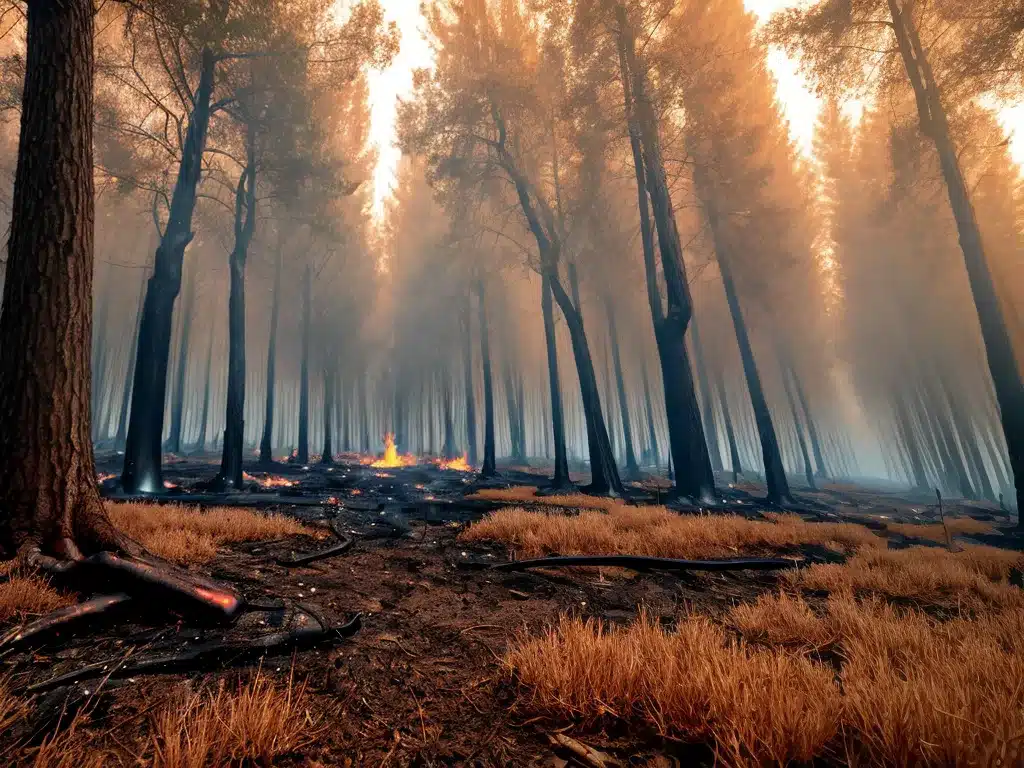
Forest Fire Detection Gets a Boost from IoT Sensors
Forest fires are a serious threat to people, wildlife, and property across many parts of the world. In recent years, the Internet of Things (IoT) has emerged as a promising way to improve early fire detection and monitoring. In this article, I will discuss how IoT sensors and networks can give fire detection a much-needed boost.
The Growing Threat of Forest Fires
Forest fires are a natural part of many ecosystems. However, human activity and climate change have increased the risk, size, and intensity of fires in many regions. Prolonged drought, higher temperatures, invasive species, and accumulation of dry vegetation provide fuels for bigger, more destructive blazes.
Major wildfires now threaten habitats as well as rural and urban communities. The 2018 Camp Fire in California was the state’s deadliest and most destructive fire on record, killing 86 people and destroying over 18,000 structures. Fires also produce hazardous air pollution – increasingly a public health concern.
Early detection is key to better fire suppression and mitigation. But many areas lack comprehensive monitoring, and existing methods have limitations. This is where IoT technology shows great promise.
How IoT Sensors Can Enhance Wildfire Detection
IoT refers to the growing network of internet-connected devices embedded with sensors that can collect and transmit data. For forest fire detection, small IoT sensors can monitor environmental conditions, vegetation, humidity, and more. With two key advantages:
-
Real-time monitoring – Sensors provide constant, live data instead of periodic surveys or satellite images. This enables detecting fires quickly, even before they are visible.
-
Expanded coverage – Thousands of small, inexpensive sensors can be widely deployed in hard-to-reach areas lacking other detection systems. IoT networks provide broader, more dense coverage.
Specific IoT approaches for better wildfire detection include:
Thermal Sensors
- Measure temperature increases that indicate a fire’s radiant heat. More sensitive than satellite systems.
Smoke/Gas Sensors
- Detect carbon monoxide, nitrogen oxides, and other particulate matter released by fires.
Weather Monitoring
- Wind, humidity etc. provide context on fire risk conditions.
Remote Cameras
- Confirm fires visually when sensors detect anomalies.
Soil Moisture Sensors
- Monitor drought conditions and moisture content of vegetation fuels.
With a distributed network, data from multiple types of IoT sensors can be aggregated and analyzed with algorithms to identify probable fire events for emergency responders. The future potential is large-scale integration of IoT across fire-prone landscapes.
IoT for Ongoing Fire Monitoring
In addition to early detection, IoT-enabled sensors have applications for monitoring active fires:
-
Track the perimeter and spread of a fire in real time.
-
Identify hot spots and changing wind conditions.
-
Monitor fire impacts like air quality in nearby communities.
-
Help assess when fires are contained and safe.
-
Aid post-fire ecological recovery monitoring.
IoT sensor networks essentially provide enhanced situational intelligence for fire crews before, during, and after wildfires occur. This can improve firefighting tactics and public safety.
Implementing an IoT Wildfire Detection System
Transitioning to an IoT-based system involves challenges like deploying ruggedized sensors in remote terrain, battery/power constraints, and transmitting data from distant areas with limited connectivity. However, several IoT pilots have proven successful:
-
HPWREN – A long-running network of meteorological and webcam sensors across San Diego county helps detect fires early and accurately.
-
FireWxNet – A partnership between University of California and other entities uses weather stations for fire detection.
-
FIRESENSE – Introduced a self-contained sensor unit combining thermal imaging with real time analysis and alerts.
-
Sutron Cellular Network – Uses solar-powered sensors to monitor live fuel moisture levels in high-risk areas.
With more research and investment, expanded IoT capabilities can significantly bolster forest fire detection across fire-prone ecosystems. The urgency and severity of recent mega-fires make a compelling case for pushing this technology forward.
Conclusion
Forest fires present an increasingly dangerous impact of climate change. IoT-connected sensors have demonstrated their value for expanding the coverage and speed of wildfire detection. With smart deployment and analytics, sensor data can feed into early warning systems to alert fire response teams of emerging ignitions. IoT technology is already helping, and has enormous potential, to reduce the risks to lives, homes, wildlife habitat and more from catastrophic forest fires.












